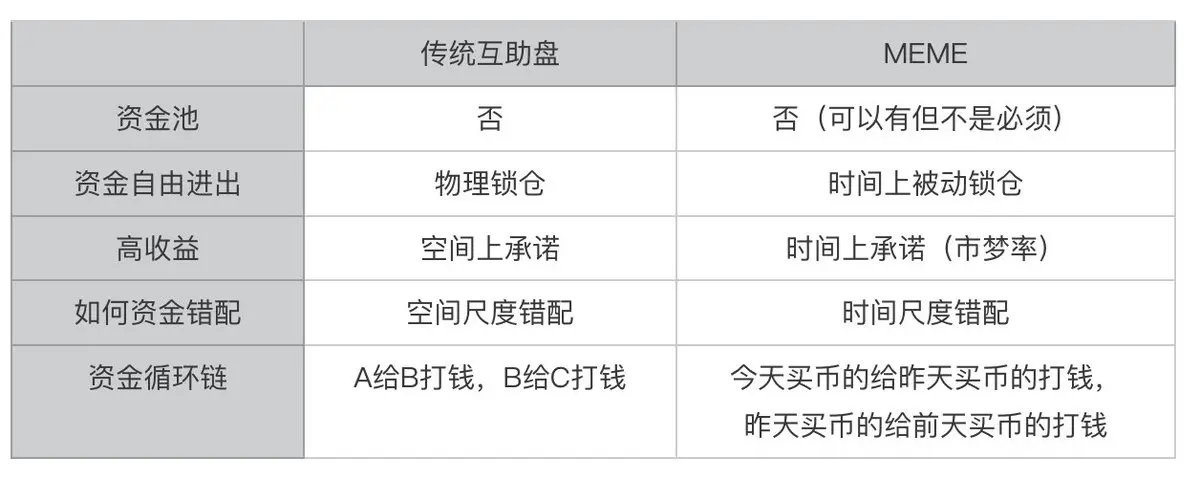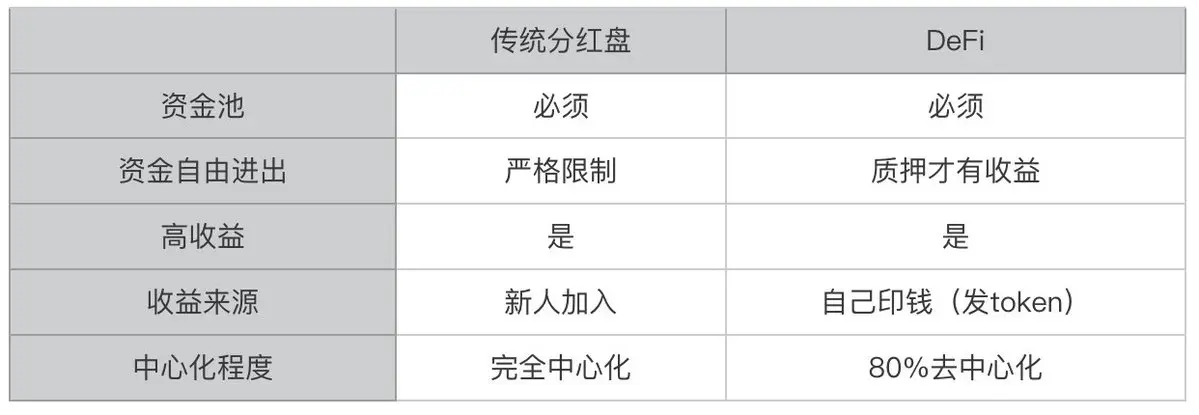From the perspective of the Ponzi Three-Plate Theory, the rise of MEME coins
Author: CaptainZ
Source: Deep Tide TechFlow
The Three Plate Theory is a cognitive model about Ponzi schemes proposed by Crypto Veda. This article explores the reasons for three bull markets based on this theory: MEME coins are mutual aid plates, DeFi is a dividend plate, and ICOs are split plates.
What is the Three Plate Theory
Crypto Veda believes that one of the greatest values of Crypto is the first realization of the democratization and tradability of Ponzi schemes.
Anyone can issue and trade plates. Setting aside external factors, each round of the bull market in Crypto is driven by fundamental innovations in Ponzi schemes. By studying Ponzi schemes, you can find trend-level Alpha in the market based on the first principles required by Ponzi innovations.
Although Ponzi schemes can be dazzling, there are fundamentally only three models: dividend plates, mutual aid plates, and split plates. All Ponzi schemes are combinations of these three models. Based on this analytical logic, he calls it the "Three Plate Model." The three plates can appear individually or in combination, each with its own advantages and disadvantages, corresponding to the respective logic of starting, operating, and collapsing.
Dividend Plate: A one-time investment of a whole sum of money, receiving returns through linear dividends over time;
Mutual Aid Plate: A gives money to B, B gives to C, C gives to A, thus forming a flow mismatch, with returns settled per transaction;
Split Plate: Continuously splitting an asset into new targets. Attracting incremental funds through new low-priced targets. Returns are realized through the appreciation of the targets;
In terms of logical design, the characteristics of the three plates are as follows:

MEME is a Mutual Aid Plate
The core of traditional mutual aid plates lies in the flow mismatch of funds. This model typically involves multiple participants transferring money to each other in sequence, forming a cycle of funds. Generally, a user receives more money from the next person than they give to the previous one, thus earning more than their original investment. The project party usually earns returns through a cut from each transfer.
This Ponzi model is the most decentralized among the three models because once the rules are established, there is no need for a "management party" to intervene, as the cut is essentially a tax.
Traditional mutual aid plates represent a spatial scale of fund mismatch, so they do not require the formation of a fund pool, and most cannot freely deposit or withdraw funds, but they must promise high returns. So why do we say MEME coins are mutual aid plates?
We generally believe that MEME coins have two most important attributes:
Fair Launch: Everyone can participate (everyone can help each other);
Full Circulation: No need for the project party to reserve;
The so-called "cultural attributes" and "particularly large total supply" are not necessary.
MEME coins are actually a time-scale fund mismatch. We assume that in a certain bull market context, a certain MEME coin keeps rising strongly, which means that today’s high-priced buyers are paying yesterday’s buyers, and yesterday’s buyers are paying the ones who bought at the lowest price the day before. Because of the uniqueness of time itself, it also creates "passive locking" (one cannot step into the same river forever). Thus, we have the following comparison:

DeFi is a Dividend Plate
DeFi is the core narrative of the last bull market (2020). Technically, it involves writing financial rules into smart contracts (a way of combining blockchain technology with a certain field). From the perspective of token economics, it distributes protocol tokens through liquidity mining: depositing money into the protocol to obtain tokens.
For example, two of the most important aspects in finance are trading and lending, which led to the emergence of Uniswap and Compound. In Uniswap, users provide liquidity by depositing pairs of tokens A and B into a liquidity pool to earn returns. In Compound, users need to deposit lendable tokens into a liquidity pool to earn returns. Most of the returns are protocol tokens, with a small amount being real money (stablecoins).
DeFi is a typical dividend plate because the basic logic of a dividend plate is "a one-time investment of a whole sum of money, receiving returns through linear dividends over time," which is exactly the same as the above method. We also have the following comparison:

ICO is a Split Plate
ICOs are the core narrative of the previous bull market (2017). The general play was to write an idea from any field into a white paper, then raise funds and issue tokens, leading most people to mistakenly believe that the only application scenario of blockchain is "issuing tokens" (another way of combining blockchain technology with a certain field). Thus, during that period, many strange tokens appeared, such as "issuing a token for environmental protection," "issuing a token for computers," "issuing a token for charity," and so on.
We know that a split plate continuously splits an asset into new targets. Attracting incremental funds through new low-priced targets. Returns are realized through the appreciation of the targets, which is exactly the performance of ICOs. If we view the cryptocurrency sector at that time as a fund plate, the emergence of various ICOs was precisely splitting the cryptocurrency asset into new investment targets (new ICO tokens) through "new stories" to attract incremental funds. Thus, we still have the comparison chart:

The Coin Circle is the Plate Circle
If we ignore specific technological evolution and look at it purely from the perspective of token economics, it seems that the past decade indeed represents the evolution of Ponzi models. We can even view Bitcoin mining as a type of dividend plate (staking mining generates BTC returns).
So, is the evolutionary sequence: dividend plate (BTC mining) -- split plate (ICO) -- dividend plate (DeFi) -- mutual aid plate (MEME)? At the same time, projects are becoming increasingly decentralized.
On the other hand, if we view MEME as a sector, the emergence of more and more MEME coins is also a manifestation of split plates, so we can consider MEME as a combination of (mutual aid plate + split plate).
Mutual aid plates may be the real answer to the "no one taking over" situation in this bull market (Restaking is a dividend plate, DePin is a dividend plate, Layer2 is a split plate; clearly, retail investors in this bull market only want to play mutual aid plates).










